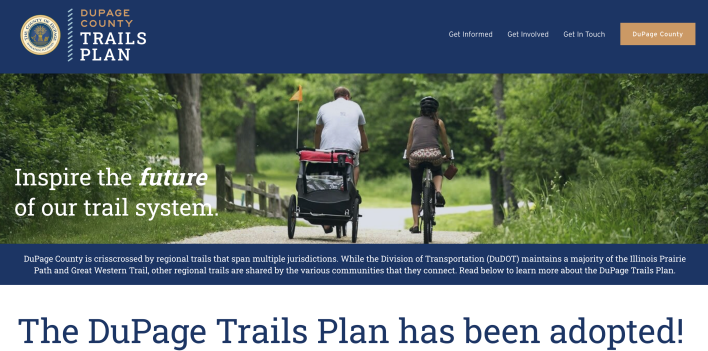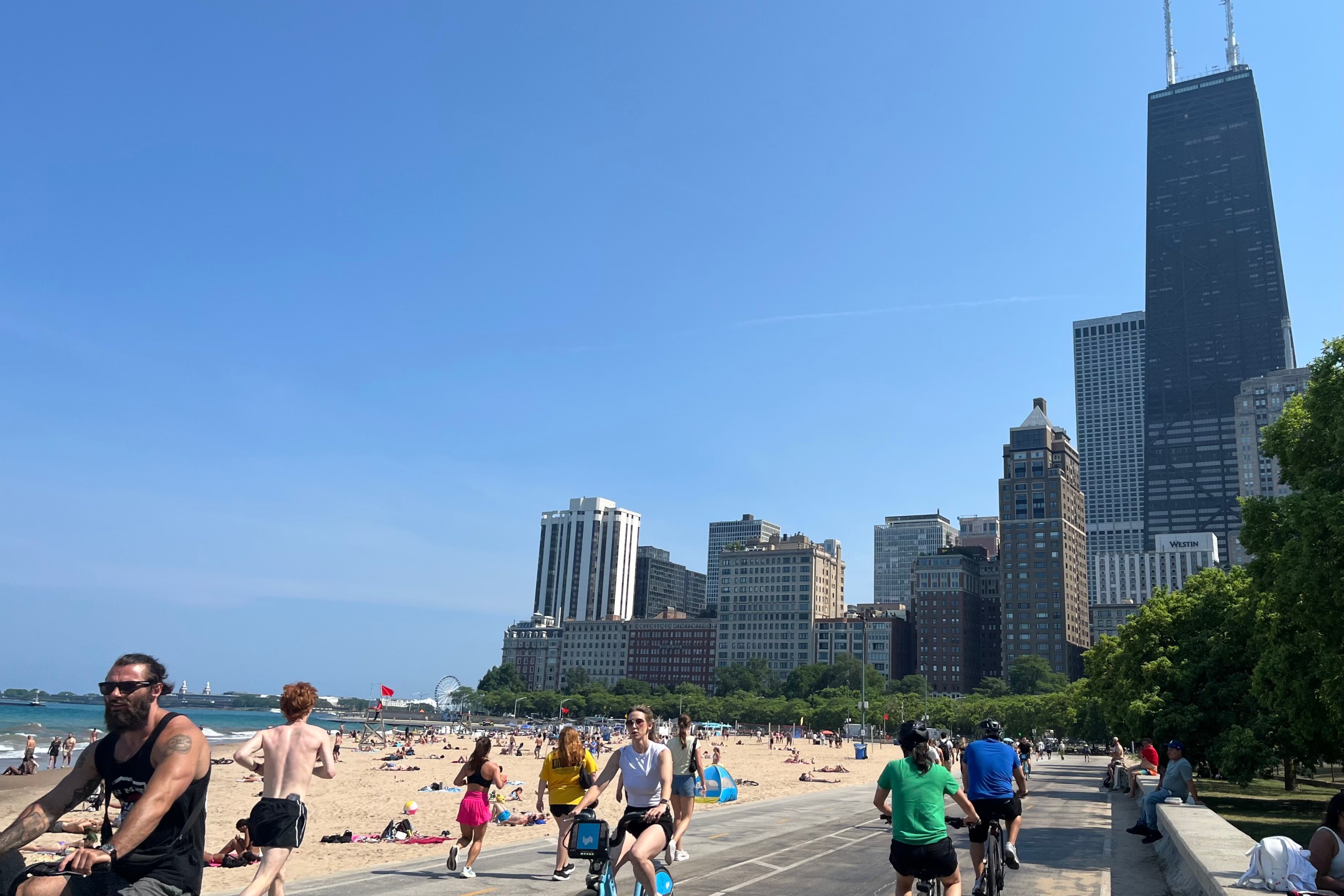
Recently the Active Transportation Alliance hosted a Virtual Transit Lunch and Learn focusing on how to improve first/last mile trips to and from transit, as well as walking conditions near bus stops and transit stations in DuPage County. Representatives included State Representative Eva-Dina Delagdo (D-3rd), DuPage County Chair Deborah Conroy, and DuPage County's Chief Transportation Planner John Loper participated. ATA Campaign Organizer W. Robert Schultz III also spoke during the meeting.

"I feel like my life has become talking about transit, and I am happy to be doing it because it's something that for me is kind of a passion project," Delgado said during the meeting. "I have spent a lot of my career talking about transit, and before I became a state representative, I worked for the CTA. So, I had a lot of experience on the ground with community engagement. That has kind of what shaped my perspective on transit today."
"And when I talk about transit, I know it's not always the sexiest topic in the world, but the way I talk about it is transit is the fabric that connects people," Delgado added. "It is what helps people move in our region, and the reason that I center people is because sometimes we like to talk about rolling stock or buses or trains, or we'll talk about board appointments or something like that. But I like to always come back to talk about the people who are impacted by it. Transit is what gives people access to jobs, to opportunities, to schools. It really brings all of our communities together."
Delgado concluded that while some people might see the current Chicagoland transit situation, including a looming $730 million fiscal cliff, as a crisis, she sees it as an opportunity to transform our system and make it work for people. A few years ago, Delgado and colleagues introduced a state bill requesting that the Chicago Metropolitan Agency for Planning do a study on transit in the region. As Delgado put it, the trick now is to go from the starting point of an idea drafted in a bill and get it through the finishing process.

"Our residents deserve safe, accessible, and reliable ways to move throughout their day," said DuPage County Chair Conroy during the meeting. "Yet many of our neighborhoods lack basic pedestrian infrastructure such as sidewalks, crosswalks, and a bike lane. A robust transit system should not start and end at the bus stop and the train station. It should seamlessly integrate with pedestrian pathways and bike routes, allowing for safe and easy. Prioritizing these investments will not only reduce vehicle congestion, but also promote healthy and active lifestlyes."
"Along these lines, we need to address the first and last mile of travel, from a resident's home to a transit stop, or from a station to their destination," Conroy added. "These crucial missing directions often force residents to rely on personal vehicles for short distances that could otherwise be covered by walking, biking, or using a shuttle service. To address this, we must invest in multi-modal solutions and pedestrian-friendly infrastructure."
With regard to the first/last issue, while the relatively affluent county is better served by transit that some of the other collar counties, fixed routes only cover about 35-40 percent of DuPage. Pace Community Shuttle service was discontinued in 2021 due to COVID-19, and none of the Metra stations provide bike- or car-share service to outlying areas. There are a dozen unserved employment "deserts" in the county. According to Transportation Planner Loper, the county has a Long Range Transportation Plan that they adopted back in 2021, which paved the way for several new mobility and safety plans they're currently pursuing.
"This plan was, was a real departure for us, as we evolved more from a pure County Highway Department where we were really concerned about expansion and enhancement of roads," said Loper. "We are now really working towards being a full-service department where we talk about mobility, safety, [Americans With Disabilities Act acces], state of good repair, and modernization of systems almost as much as we do expansion of network. Our ADA Transition Plan pertains to DuPage County highways only. It was adopted a couple of years ago, and basically, we have a heavy emphasis on sidewalk compliance. And with ADA guidelines, we have walked the system. The staff has identified the curb ramps and pedestrian signal systems that require improvement."
According to Loper, this is just the first stage of making transit stops and stations more accessible to pedestrians. The county has also worked on a recently adopted trails plan that views the Illinois Prairie Path and Great Western Trail rails-to-trails conversions to be more than recreational. They've also completed a Mobility Framework Plan that talks about supporting transportation needs across the county, not just highways.

"The Active Transportation Plan, which we are just beginning to begin here in 2024, will build upon the mobility framework and the focus on building the connections between the county, state, and municipal systems so that we can actually have a continuous system that is satisfying to all," Looper concluded. "And finally, we're also currently working on the Safety Action Plan, which is sponsored by CMAP's good work to provide the region with over $4 million grant to provide an action plan for the region to supply back to the U. S. [Department of Transportation] for implementation. So all of these are required, ultimately, to emphasize disadvantaged communities through the USDOT Justice 40 initiative."

Did you appreciate this post? Please consider making a tax-deductible donation, to help keep Streetsblog Chicago's sustainable transportation news and advocacy articles paywall-free.



